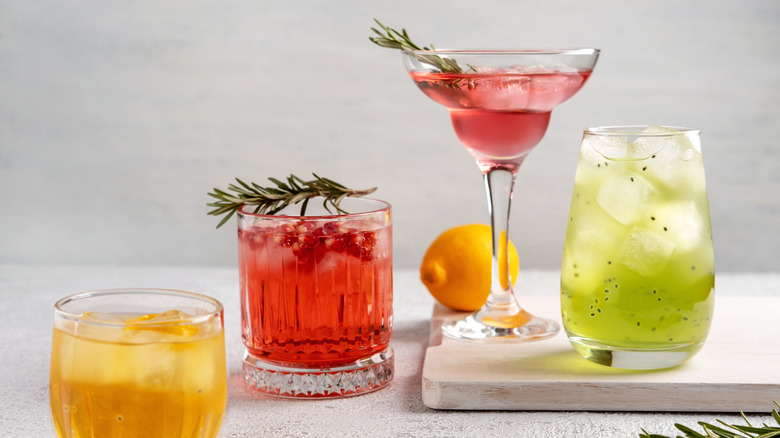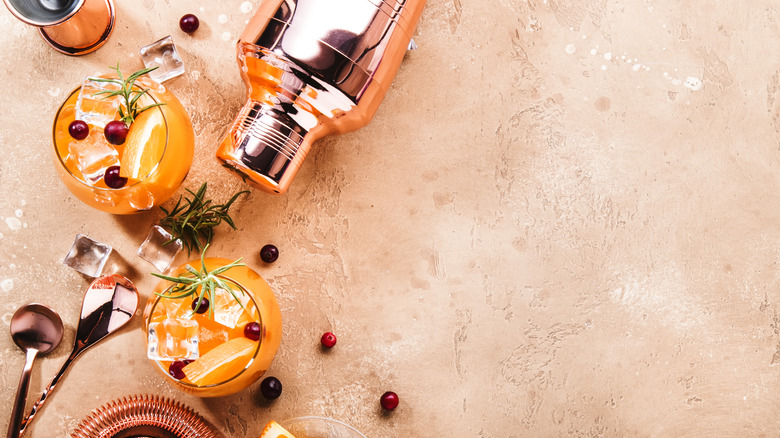The Top Tip For Crafting Your Own Signature Cocktail
Making a cocktail at home may suddenly seem appealing, so you crank up the music, put on some cozy dancing slippers, and pull out those fancy cocktail glasses hiding in an upper cabinet. Your inner mixologist comes alive, telling you how easy it'll be to create that "art in a glass" that everyone will swoon over. Maybe your signature cocktail will even adorn the menu of that pub down the street, bearing your name for all to marvel at. At the very least, it'll make for a fine evening with friends or family at home.
Okay, daydream over. As with most valuable things in life, cocktail innovation is not as simple as it seems. It takes some skill, knowledge, a knack for flavor combinations, and much more. As noted in our Tasting Table guide featuring bartender cocktail tips, it's not about the showoff stuff, like sending a shaker airborne or igniting rum in a blaze of glory. It's more like common sense, creativity, and a hefty dose of know-how.
Do check out the tips in our extensive guide, all 15 of them — but for now, here's the one you really need to know. It brings it all together and might make your mixologist daydreams come true, at least in your kitchen or home cocktail bar.
Creating a cocktail is a literal balancing act
The ultimate tip for crafting your signature cocktails is bringing in balance. At this point, you've snooped on professional bartenders doing their thing and maybe even read up on distillation methods, brand-name spirits, or the basics of flavors and aromas. And, of course, you've stocked up on experiment-worthy essentials like simple syrups, bitters, juices, aperitifs, or liqueurs. But after choosing a base spirit for which you likely harbor a fondness already, it's time to dive into the real order of business.
Failing to focus on balance has decimated even the most promising cocktail creations. It's all about not letting one element of your emerging cocktail overpower the others, namely the alcohol, sweetness, acidity, and water content. If you're making a cocktail that requires sweet and tangy ingredients, determine precisely how much is necessary to balance the two.
For example, if you're making your version of a refreshing mojito using sugar and lime juice, you don't want it to be too sweet or too citrusy. Also, remember those fresh mint leaves you'll muddle in and the type and amount of rum. White would blend more harmoniously than a spiced dark rum.
Many bartenders and professional mixologists create balance by following what's known as the Golden Ratio of cocktails: 2:1:1. That means two parts alcohol, one part sweet, and one part sour. It's a good and safe starting point — just don't be afraid to pour outside the lines as you become more confident. After all, it's your signature cocktail.

